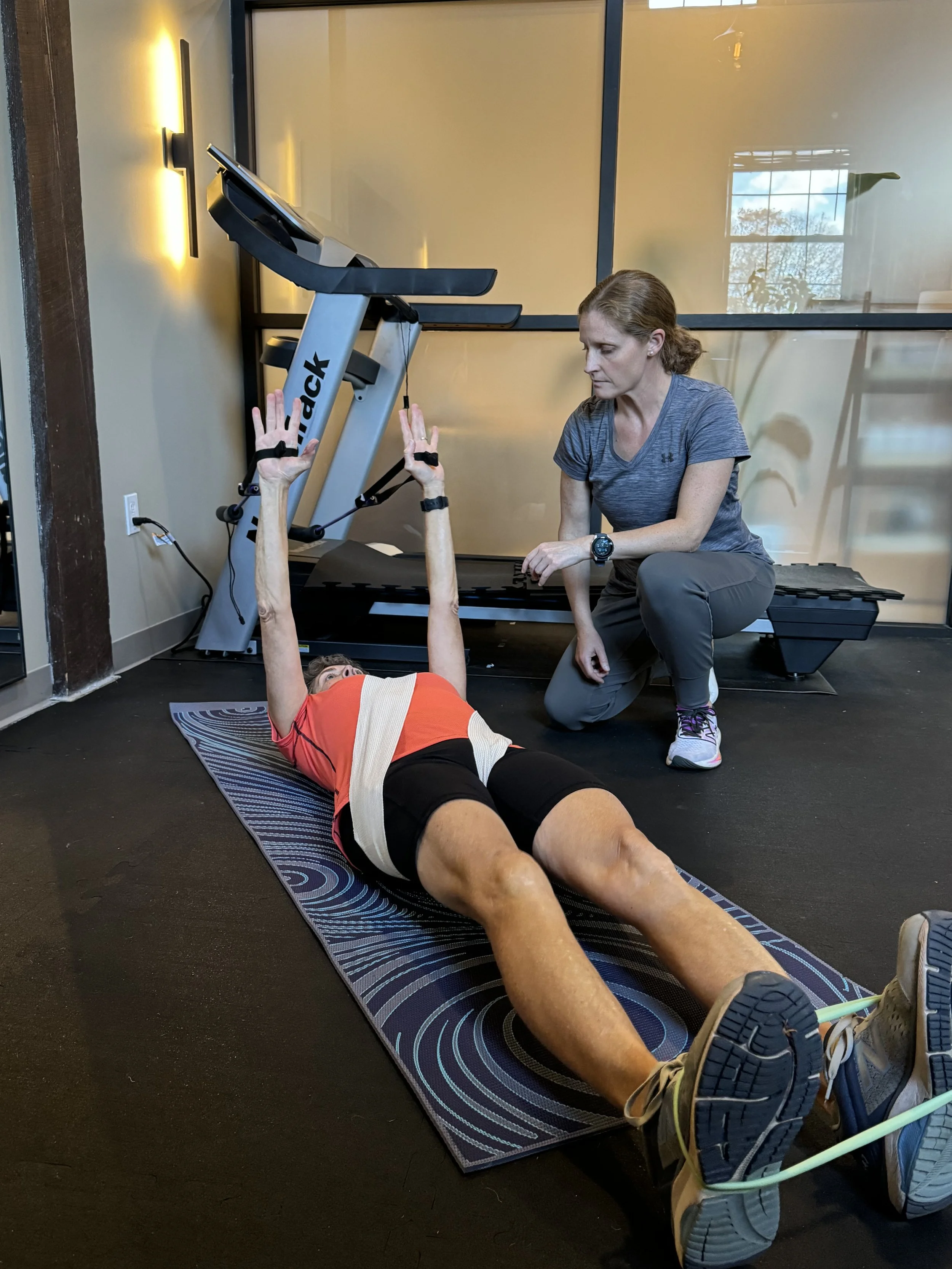Nerding Out on Neuroscience: Neuroplasticity as a Tool for Rehabilitation
The human body is a marvel of complexity, with the nervous system serving as its intricate command center. This extensive network plays a pivotal role in how we interact with the world around us. It helps us to coordinate our movements, maintain balance, and navigate our environment all while constantly processing information (both internal and external) behind the scenes. Understanding the incredible sensitivity and responsiveness of the nervous system can offer profound insights into how we can best manipulate exercises and therapeutic contexts to yield great client outcomes. This approach is particularly valuable in physical therapy, where neuromotor re-education and movement-based training play critical roles in helping individuals overcome dysfunctional movement and postural patterns.
The Sensitivity of the Nervous System
The nervous system is highly responsive to various forms of sensory input, including touch, proprioception (the sense of body position), and vestibular (balance) information. Each of these pathways contributes to our understanding of our body's position in space and our ability to move effectively.
When we think about how the nervous system reacts to sensory stimuli, it’s essential to recognize that this responsiveness can be harnessed. For instance, gentle touch or pressure can stimulate specific receptors in the skin, leading to reflexive motor responses. By strategically applying sensory input, we can influence how the nervous system communicates with the muscles, ultimately altering and improving movement patterns.
One of the most fascinating aspects of the nervous system is its plasticity - the ability to adapt and reorganize in response to new experiences and stimuli. Physical therapists and movement practitioners alike can leverage this plasticity to facilitate improved motor performance. Oftentimes in my clinic I will employ such strategies as the use of tactile cues, bands, placing load on the body in a specific way, vibration, etc. When clients receive this concentrated sensory input in a training environment, it can lead to enhanced awareness, improved coordination, and better control over their movements.
How it Works
The interplay between sensory input and motor output is governed by complex neural pathways and mechanisms. It is helpful to understand a bit more about the neural pathways involved and how this process works. When sensory input is provided to the body, specific sensory receptors are activated. We have various specialized receptors in the body to detect things such as pressure, temperature, vibration, chemical and mechanical changes, etc. These receptors convert external stimuli into electrical signals that travel along afferent pathways to our central nervous system, aka the spinal cord and brain. Each type of receptor has a distinct pathway.
Once sensory information reaches the spinal cord, it undergoes initial processing. Interneurons within the spinal cord integrate this data and can facilitate a reflex response. This is in critical situations where a quick reaction is necessary, such as withdrawing from a painful stimulus like a hot stove.
From the spinal cord, sensory signals travel via two primary ascending pathways known as the Dorsal Column-Medial Lemniscal Pathway or the Spinothalamic Tract. The DCML pathway transmits fine touch and proprioceptive information to specialized brain centers while the ST carries information pertaining to pain and temperature. All of this information ends up at the brain center known as the Somatosensory Cortex. This is the area that processes sensory information and maps the body in a way that allows for spatial awareness and motor planning.
Other brain centers also deserve a shout out for their contributions. The Cerebellum plays a critical role in coordinating movement and balance. It allows for precise motor adjustments based on information coming in about body position and movement. The Basal Ganglia is also important when it comes to motor control. More specifically, it helps to initiate and smooth out movements based on sensory feedback.
Re-training Gait, the Neuroscience way!
Application of bands to facilitate improved body awareness and more coordinated motion
Concentrated Sensory Input: A Powerful Tool
Using inputs such as those mentioned above can significantly enhance neuromotor re-education and can yield amazing results within one session. Here is how it works:
Feedback Loops: The nervous system employs feedback loops where sensory input continuously informs motor output. For example, a patient returning to walking after knee surgery may have a difficult time fully extending their knee due to decreased proprioception, fear, and pain. Adding tactile feedback such as a band at the knee can help them to adjust the movement in real time and facilitate a more coordinated and controlled response.
Muscle Response: Muscle spindle receptors (which detect muscle stretch and rate of stretch) and Golgi tendon organs (which sense tension or force) relay information back to the central nervous system. This information influences motor neuron activity, leading to a more refined and effective muscle response.
Heightened Awareness: Application of specific types of inputs can serve as more of an intrinsic cue for the patient. By targeting one area, patients can develop a greater awareness of their body and its movements. This heightened awareness is essential for recognizing dysfunctional patterns and making necessary adjustments, aka - it helps to teach the brain how to correct itself.
Facilitating Motor Learning: Concentrated sensory stimulation can accelerate motor learning. When patients experience immediate feedback through sensory cues, they can adjust their movements in real time, fostering better retention of new skills. Repeated exposure to specific sensory stimuli can strengthen synaptic connections, facilitating new pathways that enhance motor responses.
Breaking Down Barriers: For individuals who deal with chronic pain, certain sensory inputs can help desensitize the nervous system. This in turn can reduce pain perception and enhance mobility, paving the way for more effective rehabilitation.
The intricate neural pathways and mechanisms that connect sensory input with motor output highlight the power of these types of interventions in physical therapy. By understanding how these pathways work, therapists can tailor their strategies to enhance neuromotor re-education, leading to improved functional outcomes and better quality of life for patients.
As research continues to unfold, the potential of sensory input as a therapeutic tool will undoubtedly expand, offering new avenues for rehabilitation and recovery. Engaging with these methods not only aids in immediate recovery but also promotes long term adaptability and resilience in movement patterns.
Want to learn more about how these techniques can help you move better and feel better? Contact me here!


